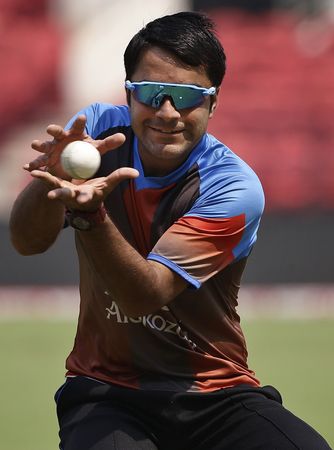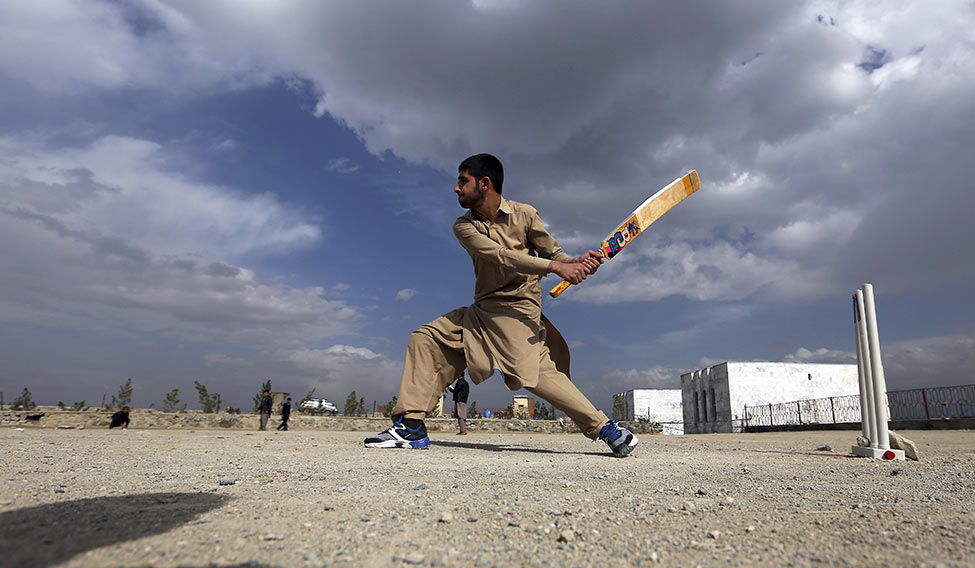The month of Ramadan was particularly bloody for Afghanistan. The string of truck bombs and suicide bombers did not discriminate among civilians, soldiers and policemen. A relatively quiet Eid ul-Fitr came as a blessing.
Actually, Eid celebrations started a few days earlier, on June 22, thanks to the International Cricket Council granting full membership and Test status to Afghanistan. Cricket-loving Afghans cut cakes and took to the streets in jubilation. Afghanistan Cricket Board Chairman Atif Mashal and CEO Shafiq Stanikzai returned from the ICC Full Council in London to a red carpet welcome in Kabul. Afghanistan president Ashraf Ghani met Mashal and Stanikzai, and conveyed his pleasure. Stanikzai summed it up best: “It was a perfect Eid gift.”
Afghan all-rounder Mohammad Nabi’s tweet conveyed players’ sentiments: “Finally our hard work pays off and the dream of ICC full membership comes true. Can’t control my sentiments.”
Of course, it is a milestone for Afghanistan and Ireland, to be welcomed by the clannish international cricketing fraternity. But Afghanistan’s rise was far from simple. From getting hooked to cricket in refugee camps in Pakistan to becoming a Test-playing nation, Afghans did it in two decades flat. The national side trained in the United Arab Emirates, and, now in Greater Noida, Uttar Pradesh.
The architects of this rise are both in the ACB, and in the field—from Nowroz Mangal, the first Afghan skipper in 2007, to Noor Ali, who scored centuries in both innings of their first class debut at the Intercontinental Cup in 2009, to the current sensation, all-rounder Rashid Khan.
 Future fire: Rashid Khan, all of 18, is Afghanistan’s latest sensation | AP
Future fire: Rashid Khan, all of 18, is Afghanistan’s latest sensation | AP
Stanikzai spoke to THE WEEK on Eid day, from his Kabul home: “We feel very proud, and we are looking forward to this tremendous journey. So many people have worked towards this. We deserved this status.” He said the elevation also meant an increase in ACB’s roles and responsibilities.
The ACB was formed in 1995, after Afghan refugees returning from Pakistan brought cricket fever with them. In 2000, Taliban lifted the ban on cricket. The very next year ACB applied for ICC affiliate membership. As the US-led troops fought the Taliban, the Afghan national side played in the second tier of Pakistan’s domestic competition. They became a member of the Asian Cricket Council in 2003 and started playing continental tournaments in 2004. In 2006, they toured England to play against the second XIs of a few counties. In 2008, they attempted to qualify for the ICC World Cup 2011, but failed. On February 1, 2010, Afghanistan played its first Twenty20 international against Ireland and lost. And, in 2011, they got ODI status.
On its first outing in a global competition—2010 ICC World Twenty20 Championship in West Indies—Afghanistan was the most talked about participant. They lost their first match against India by eight wickets, but opener Noor Ali was applauded for his half century. The players had come some way by then, having travelled and competed outside Pakistan and Afghanistan. Soon enough, they stopped being objects of wonderment and were accepted as a talented bunch of cricketers.
Between the ODI status in 2011 and the associate membership in 2013, Afghanistan played ICC Intercontinental Cups—first class tournaments for associates—and ICC World Cricket League Championships—ODIs for associates and affiliates. The competition was the likes of the UAE, the Netherlands, Scotland and Namibia.
Associate membership brought with it better funding from ICC, and ACB built its domestic cricket structure under the watchful eyes of ICC’s high performance and game development departments. In 2014, Afghanistan played a four-match ODI series against Zimbabwe, and drew it 2-2. Former Pakistan skipper Inzamam-ul-Haq coached the side for this series. It won its first World Cup match in 2015, beating Scotland by 14 runs in Dunedin, New Zealand. This February, ICC granted first class status to Afghanistan’s domestic competition.
From associate membership in 2013, it took the doughty Afghans just four years to tick all boxes for a full membership. Afghanistan head coach Lalchand Rajput calls his boys fast learners. “Sri Lanka and Bangladesh took a lot of time to develop as strong competitors,” he said. “Afghan players are extremely passionate about the sport and want to improve. They will take some time, but they are fast learners. Afghanistan has achieved Test status in a span of six years, which in itself is an achievement. We have beaten lower-ranked teams and are ranked above them in ODIs and T20s. We have a talent pool which allows us to have different teams for the three formats.”
Afghanistan is ranked tenth in ODIs, ahead of Zimbabwe and Ireland. To put it in perspective, India is currently playing the team ranked ninth—West Indies. In Twenty20, Afghanistan is ranked ninth, and is trailed by Bangladesh, Scotland and Zimbabwe.
Afghanistan’s rise in rankings is especially significant as it will be compared with Bangladesh, the last entrant to the full members’ club. Bangladesh’s struggle on field has been a lesson for the ICC. It became a full member in 2000 and has played 100 tests since, but has only won nine. It has recorded better results in the shorter format, the surge coming only now.
Aware of the precedent set by Bangladesh, Stanikzai said, “This opens gates to so many challenges. We have to work hard to sustain the development. We are aware that we have to stamp our mark at the bigger stage. We need to win our first Test match earlier, as compared to Sri Lanka and Bangladesh. In five years, we would like to be in a dominant position in ODIs.”
The ACB has submitted a road map for team development, but there are problems beyond its control. The team is unlikely to get opportunities to play against top-ranked Test nations any time soon. For example, the draft future tours programme being worked upon for the 2018-2022 cycle includes the proposed Test league in 2019, but it has slots only for the top nine Test teams.
“We are not looking that far,” said Stanikzai, on the proposed Test league. “Afghanistan will look to play Bangladesh, Ireland and West Indies initially. We need to test the team against them.”
Afghanistan’s rise and the recognition it received as a cricket-playing nation has a lot to do with the advent of the Twenty20 format. Without doubt, the shorter format has played its role in the development of Afghan cricket. Rajput, too, acknowledged the fact, but clarified that much was being done to develop long-format skills of players. “Afghanistan has been playing lots of shorter format games and they are good at it,” he said. “Associate nations do play these formats a lot. But, we are slowly changing now. When I first joined them, the aim was to play long innings in the ODI format. Facing 300 balls in a game is very different. You have to build your innings.”
Stanikzai asserted that the strong domestic structure was giving results. “We have one of the most competitive and strong domestic structures,” he said. “Our team’s four-day record is tremendous. Our team has played 24 first class games, and got beaten only once. We do need to work on our domestic infrastructure though.” For that, there will be help from the ICC. To begin with, as full member, the ACB will now get approximately $40 million annually, while associates get $8,50,000.







